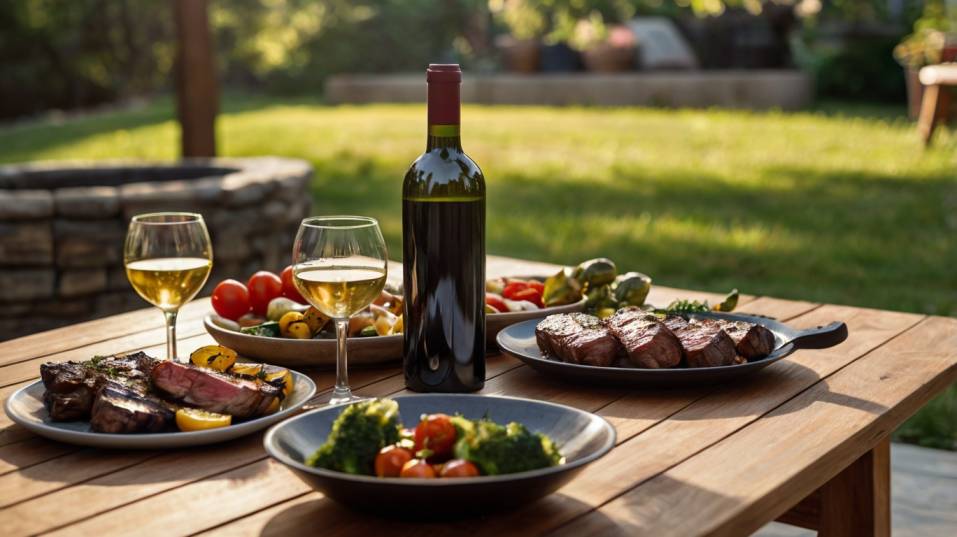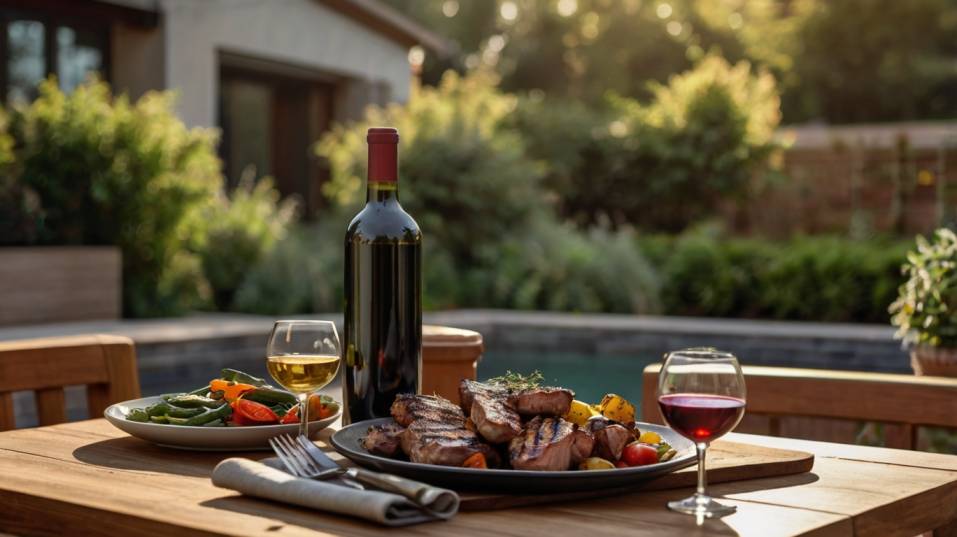The Best Wines for BBQ Season
Discover the best wines for BBQ season. Learn how to pair smart, taste better, and pick bottles that shine with smoke, spice, and sear.

Ever wonder why some wines light up a barbecue while others fall flat? The right bottle can turn grilled chaos into harmony—and sharpen your palate in the process. BBQ season is more than smoke and sizzle.
It’s your chance to learn what wine really does with food. Whether you're sipping by the grill or pouring for friends, understanding a wine’s structure helps you taste better, choose smarter, and drink with confidence.
Grill Smoke and Wine Structure: Why It Matters
The key to good BBQ pairings is simple: match intensity with intensity. Smoke, char, and caramelization add depth and bitterness to food.
High heat can dry it out. Sweet glazes or spice rubs complicate things even more. A light, acidic white might disappear. An oaky red might clash or feel heavy. The trick is to understand how your wine’s structure interacts with what’s on the grill.
Tannin handles fat. Acidity handles salt and smoke. Fruit handles char. A wine doesn’t need to be big—it needs to be responsive.
A good BBQ wine adjusts to your food’s temperature, texture, and contrast. That’s why structure matters more than style.

Red Meat, Real Tannin
Let’s start where most people do: the grill loaded with burgers, ribs, or steak. You’ve got salt, sear, fat, maybe a little sweetness. This is where structure does the heavy lifting.
Syrah works well because it brings ripe black fruit, peppery spice, and firm tannin without overwhelming oak. It mirrors char and echoes seasoning.
A Northern Rhône Syrah will feel more savory and taut, while something from California or Australia will lean plush and smoky—either way, you’re matching strength with strength.
Zinfandel thrives on grilled pork or anything glazed. It brings juicy red fruit and soft tannins with enough spice to ride out a dry rub. It also handles sweetness better than most reds, especially if your ribs or brisket come with sauce.
Cabernet Sauvignon can work—but only when your meat has the fat to match. It’s not about prestige—it’s about proportion.
A lean grilled sirloin with a Napa Cab is all elbows. But a marbled ribeye or smoked brisket? Now you’re speaking its language.
Chicken and Pork: Choose Flexibility Over Power
When you grill lighter meats—chicken thighs, pork tenderloin, even sausages—you need wines that can adapt.
Grenache brings brightness, spice, and low tannin, which makes it great for grilled pork or sausages with herbs. If the flavors lean Mediterranean—think garlic, fennel, rosemary—it’s an easy fit.
Beaujolais (Gamay) might be the most underrated BBQ red out there. Its juicy acidity and soft structure pair with everything from grilled chicken to charred vegetables. Serve it slightly chilled and let it refresh your palate between bites.
Chenin Blanc, especially from the Loire Valley, gives you options. It can be dry, off-dry, or even sparkling—but in every case, it has enough acid and texture to stand up to grilled pork chops, glazed chicken, or even a pineapple-topped skewer.
Grilled Vegetables: Elevate With Whites and Light Reds
Grilled vegetables are one of the most flavor-packed things to come off the barbecue. Smoke and char give mushrooms, zucchini, eggplant, and peppers a deeper, meatier profile—if you match it well, the wine makes it even more vivid.
Vermentino, Grüner Veltliner, or Albariño are natural fits: crisp, mineral, herbaceous whites with enough grip to handle grilled edges and olive oil. They don’t flatten or flinch. They energize.
If you want red, Barbera works beautifully. It’s high-acid, low-tannin, and food-loving. Great with balsamic-glazed eggplant or grilled portobello mushrooms.
Same goes for Cabernet Franc—especially those with bright fruit and herbal edges from the Loire.
Seafood on the Grill: Crisp Whites or Serious Rosé
Grilled seafood isn’t delicate—it’s direct. Shrimp picks up char. Salmon firms up. Oysters or scallops take on smoke. Your wine needs to refresh, not overpower.
Muscadet, Picpoul de Pinet, or Assyrtiko are high-acid whites that clean the palate and tighten flavor. They shine with briny grilled oysters, shrimp skewers, or simple grilled fish with lemon.
For salmon or tuna, you can go richer. Dry Riesling has just enough fruit and acid to bridge oil and sear.
Or try rosé—not the soft pink stuff, but a serious, savory style with enough texture to hold its own. Look for rosés from Tavel, Provence, or Spain’s Rioja region.
Sauce and Sweetness: Adjust for Contrast
If BBQ sauce hits the table, you need to rethink your wine. Sugar, spice, and vinegar change everything. You can’t just go drier and redder.
Instead, lean into fruit and spice. Zinfandel, again, is a hero here. So is Tempranillo, especially if it’s juicy and youthful. Avoid too much oak. Avoid too much tannin. You want a wine that welcomes the sugar and plays nice with heat.
If your sauce leans toward Korean flavors—gochujang, soy, sesame—try an off-dry Gewürztraminer or Riesling. The residual sugar balances the spice, while acidity keeps things clean.
Serving Tips: Get the Temperature Right
Barbecue happens outdoors. Your wine should behave like it knows that.
Chill your reds. 10–15 minutes in the fridge (or a quick ice bucket dunk) brings them to around 55–60°F. You’ll get cleaner fruit, tighter structure, and less alcohol burn—especially useful for high-alcohol styles like Grenache or Zin.
Don’t over-chill your whites. Straight-from-the-fridge wine tastes dull. Let it warm slightly to release aroma and texture. Somewhere between 45–50°F is ideal. With seafood or grilled veggies, that extra nuance matters.
And yes—rosé benefits from the same attention. Not freezing cold, not warm. Somewhere in between, where the acid and texture can show up.
Final Thoughts
Barbecue is bold, messy, and full of contrast. Great wine matches that energy. It doesn’t overpower—it complements. It sharpens your perception, lifts the food, and gives every bite more depth.
The best bottles aren’t necessarily expensive or rare. They’re the ones that show up with structure, clarity, and confidence.
You don’t need to memorize pairings. You need to notice what works. Does the wine lift the food? Clean your palate? Echo the flavors without masking them? That’s the game.
So the next time you light the grill, try something new. Chill that red. Pour a serious white. Reach for the bottle that feels like it belongs in the heat.
Then taste—not just to enjoy, but to learn. Because good BBQ doesn’t need perfect wine. But it rewards smart choices.




